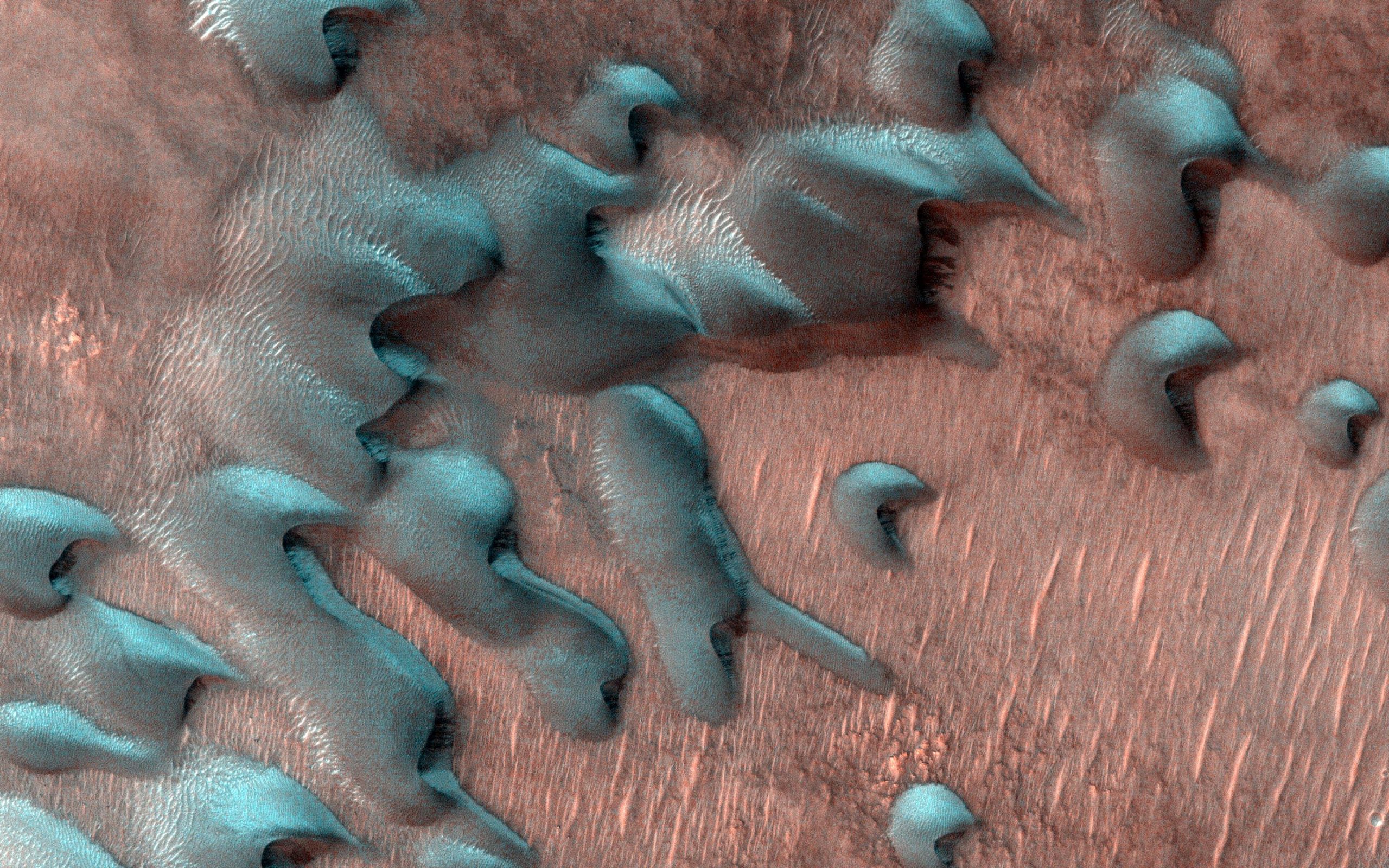Cube-shaped snowflakes, outcrops covered in surface ice and sleet characterize the coldest season on Mars. With the onset of Martian winter, the surface of our neighboring planet turns into a veritable otherworldly winter scene, the temperature in the Arctic regions can drop to -123°C. No matter how cold the weather, we cannot expect a landscape reminiscent of the snow-capped mountains of the Alps: snow deeper than one to two meters is not expected in any of the extremely flat regions of Mars. Because of the planet’s elliptical orbit, winter also comes less often, since one Martian year lasts nearly two Earth years.
On the planet, we can meet many unique winter formations, which have been studied thanks to various Martian rovers; We are now choosing from these majors.
Two types of snow
Mars snow falls in two forms: water ice and carbon dioxide snow, better known as dry ice. Because Mars’ atmosphere is much thinner than Earth’s and extremely low temperatures occur, water ice sublimates (converts to air) before it reaches the surface. Dry icy snow, on the other hand, reaches down and falls far enough that you can walk in it with snowshoes; However, if we want to ski, we must visit the edge of some crater, where snow collects on the sloping surface.
Snowfall only occurs in the coldest conditions on Mars: in the polar regions, under cloud cover, at night. Orbital cameras can’t see through these clouds, and surface units won’t survive the extreme cold. Because of this, we haven’t been able to capture snowfall yet — thanks to some special measuring devices, we’re pretty sure it’s there. NASA MRO (Mars Reconnaissance Orbiter(MCS Orbital Module)The safest Martian climate) The device detects incident light at a wavelength invisible to the human eye, seen through cloud cover, and thus detects carbon dioxide snow falling on the surface. In addition, NASA’s Phoenix spacecraft reached Mars in 2008, approx. He landed 1,600 kilometers from the North Pole and detected water ice and snow falling on the surface with his laser measuring instrument.
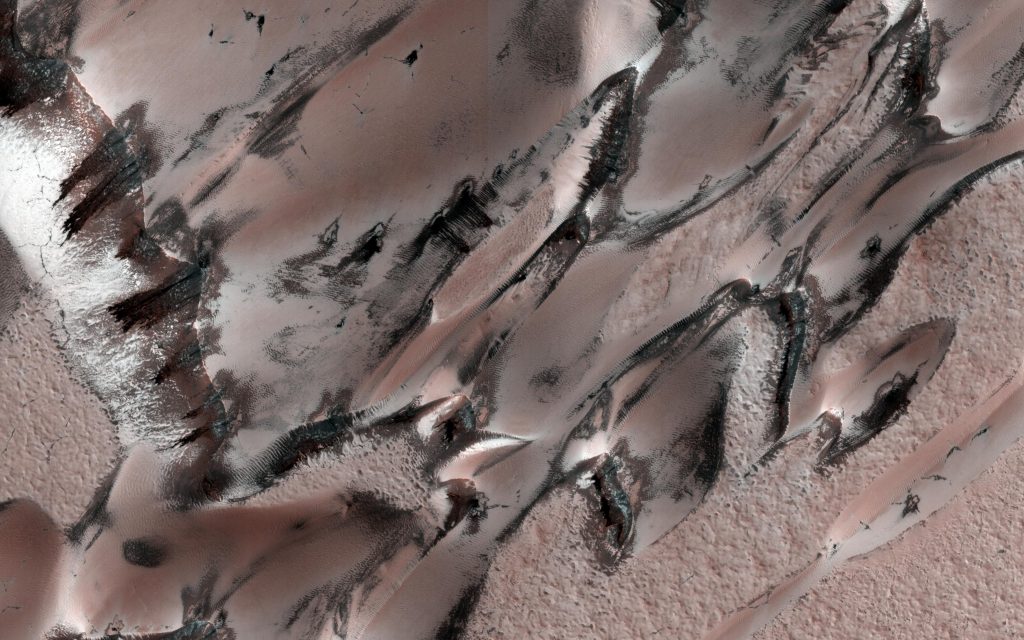
Cube shaped ice
Snowflakes on Earth are usually symmetrical and hexagonal because the water molecules are arranged in a hexagonal lattice when frozen. In the case of carbon dioxide, the molecules form four bonds, which is why dry snowflakes are cube-shaped. Thanks to MCS measurements, we also know that these snowflakes are smaller than the diameter of a human hair.
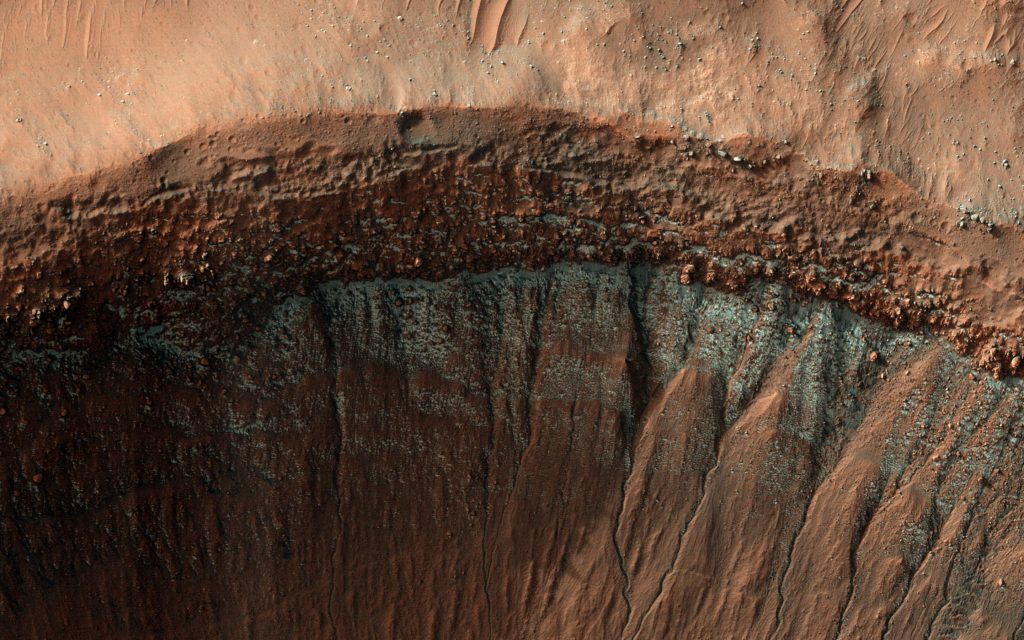
Ice flowers on the rover
Both water ice and carbon dioxide ice can solidify as surface ice on Mars over a much larger area than snow. The Viking lander observed the water ice cap in the 1970s, and NASA’s Odyssey rover observed ice formation and subsequent sublimation under the influence of the rising sun’s rays.
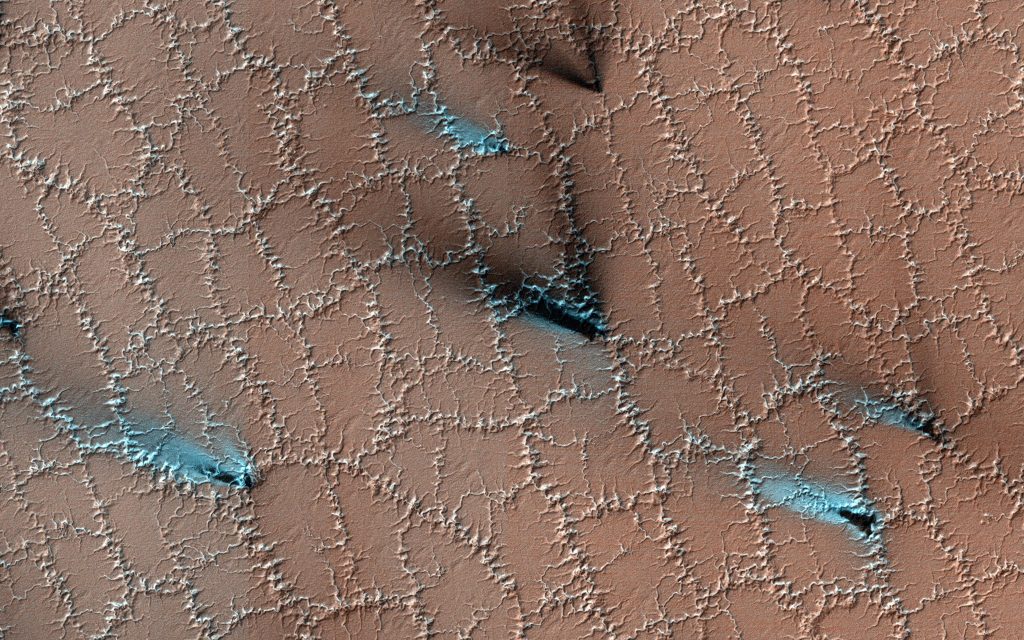
Beautiful end of winter
Perhaps one of the most beautiful phenomena can be observed towards the end of winter, when the accumulated ice begins to melt and sublimate into the atmosphere. In the process, it arranged itself into rather strange and cute shapes, which reminded researchers of spiders, Dalmatian dog spots, fried eggs, and also Emmental cheese.
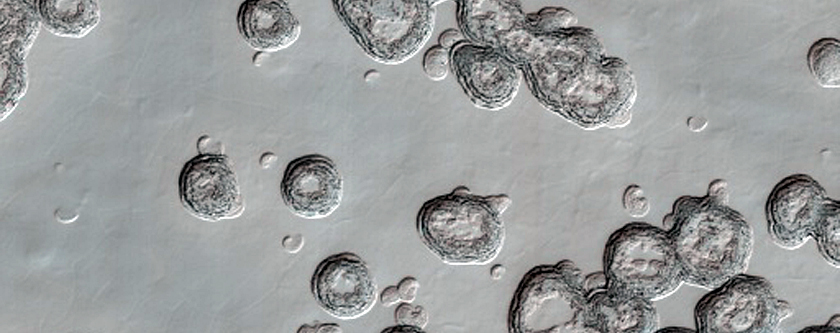
This melting also causes geysers to explode. The transparent ice allows sunlight to pass through, which heats the gas trapped underneath. Over time, gas breaks out from under the ice and scatters dust on the surface in a fan shape. The direction of the prevailing winds in a particular area can be determined by studying the shapes that are formed in this way.
Source: NASA JPL
Suspension








































